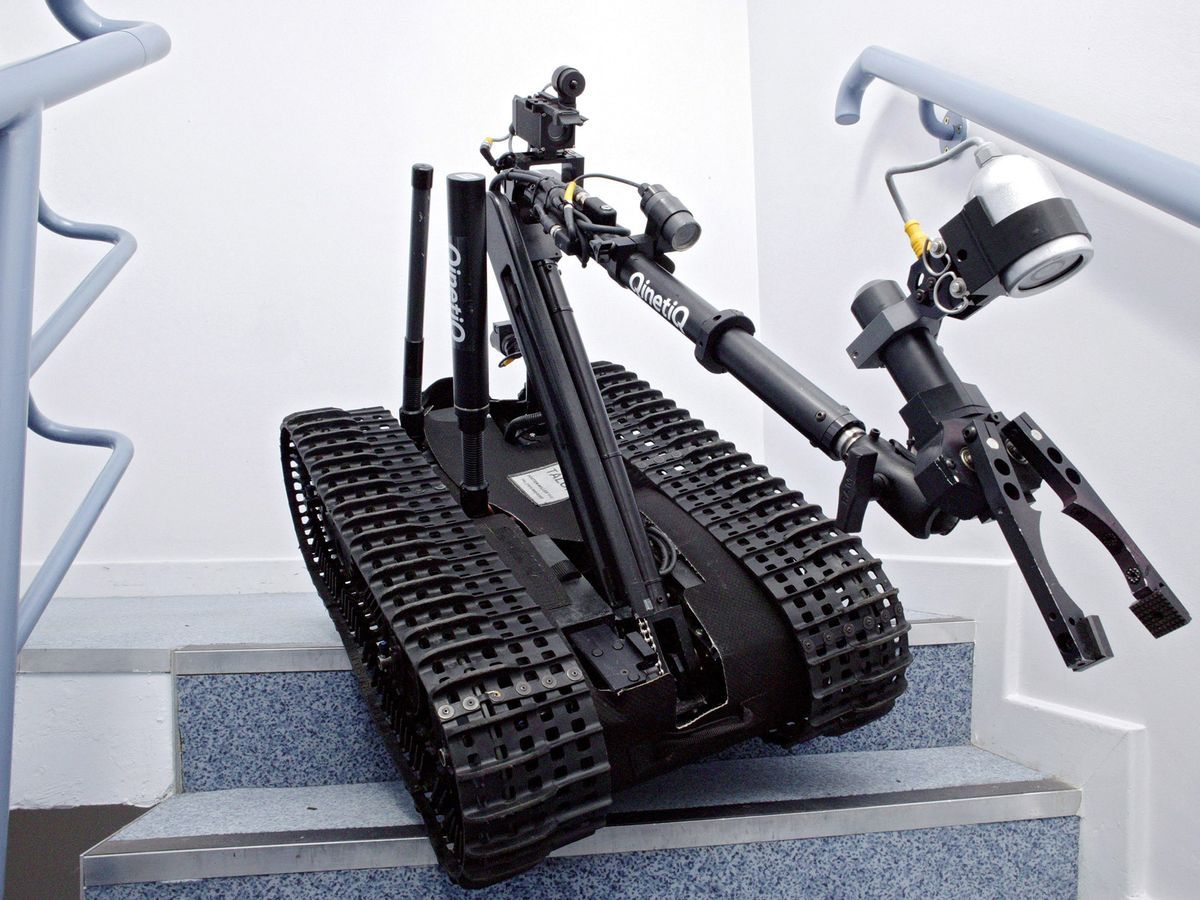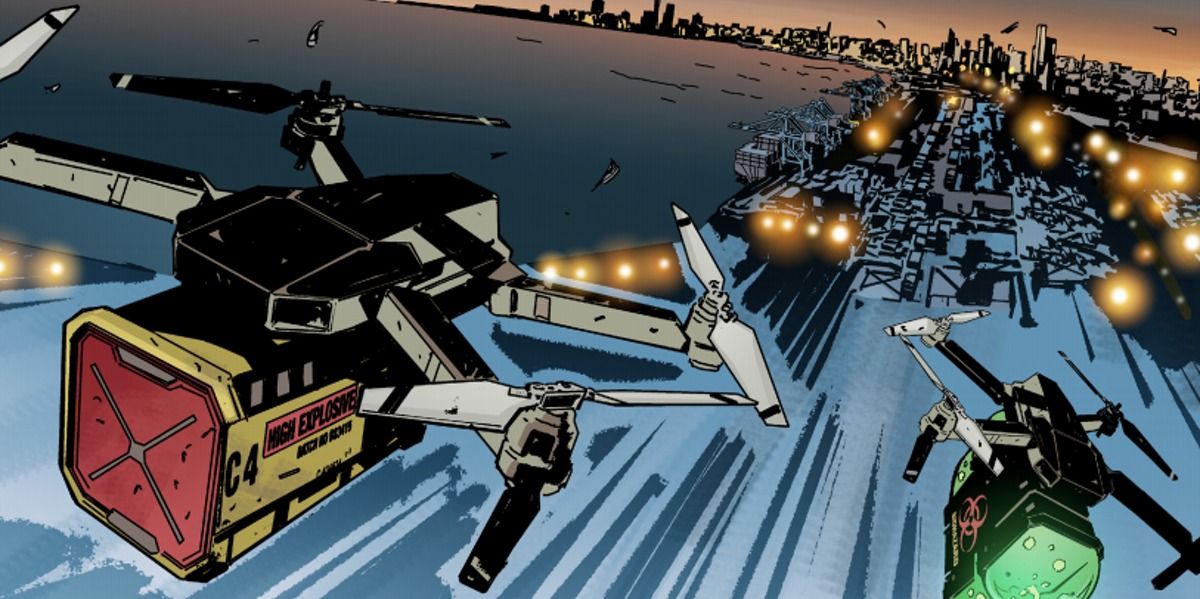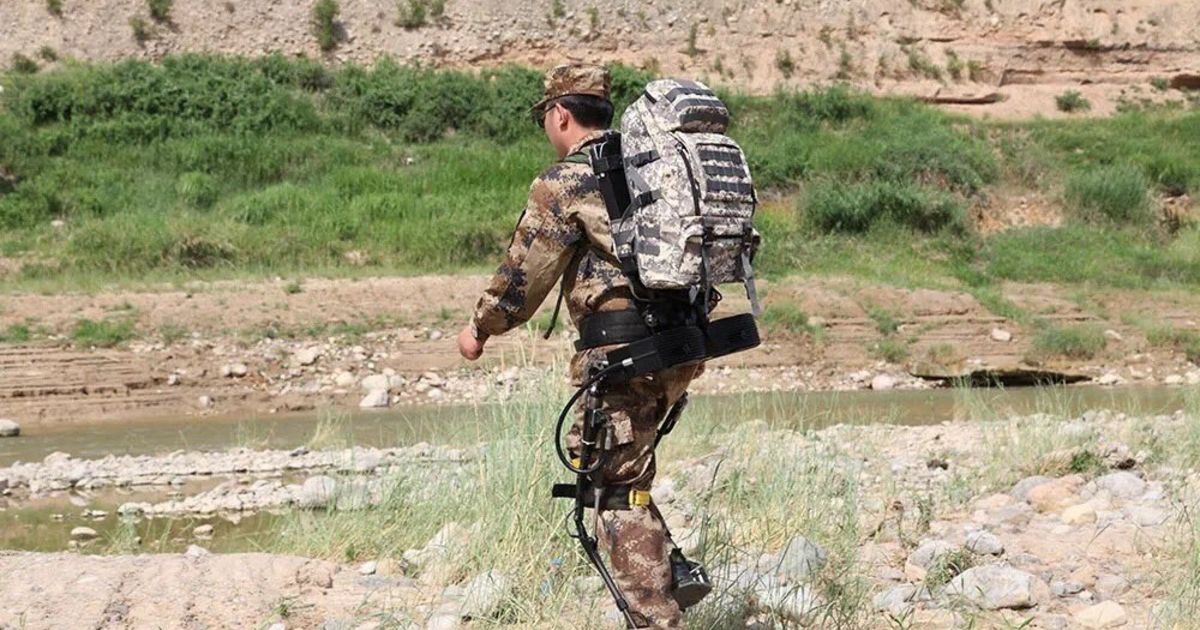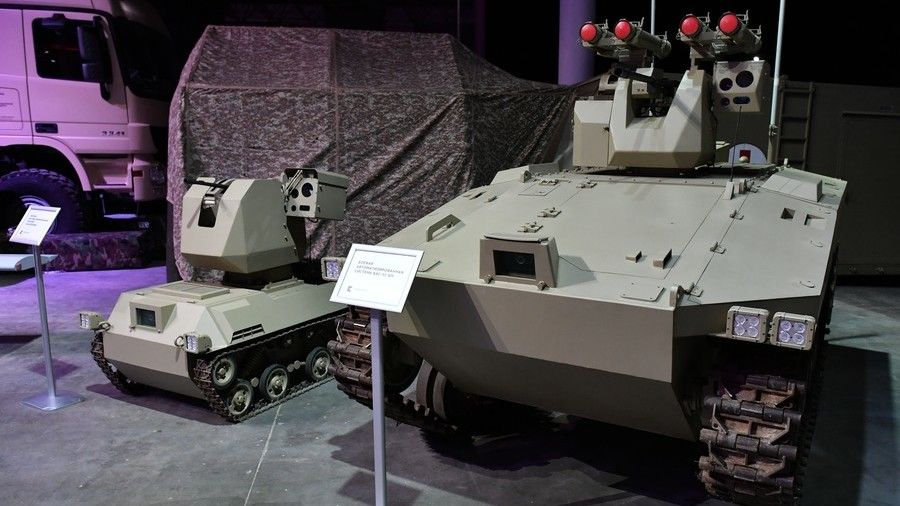Amazon, like Google, is coming under fire from the ACLU for providing sensitive tech to those who might use it to violate people’s rights.



“Within five years, I have no doubt there will be robots in every Army formation.”
From the spears hurled by Romans to the missiles launched by fighter pilots, the weapons humans use to kill each other have always been subject to improvement. Militaries seek to make each one ever-more lethal and, in doing so, better protect the soldier who wields it. But in the next evolution of combat, the U.S. Army is heading down a path that may lead humans off the battlefield entirely.
Over the next few years, the Pentagon is poised to spend almost $1 billion for a range of robots designed to complement combat troops. Beyond scouting and explosives disposal, these new machines will sniff out hazardous chemicals or other agents, perform complex reconnaissance and even carry a soldier’s gear.
More from Bloomberg.com: China Casts Doubt on Report of $200 Billion Trade Deficit Offer.
Aurora Flight Services’ Autonomous Aerial Cargo Utility System (AACUS) took another step forward as an AACUS-enabled UH-1H helicopter autonomously delivered 520 lb (236 kg) of water, gasoline, MREs, communications gear, and a cooler capable of carrying urgent supplies such as blood to US Marines in the field.
Last week’s demonstration at the Marine Corps Air Ground Combat Center Twentynine Palms in California was the first ever autonomous point-to-point cargo resupply mission to Marines and was carried out as part of an Integrated Training Exercise. The completion of what has been billed as the system’s first closed-loop mission involved the modified helicopter carrying out a full cargo resupply operation that included takeoff and landing with minimal human intervention.
Developed as part of a US$98-million project by the US Office of Naval Research (ONR), AACUS is an autonomous flight system that can be retrofitted to existing helicopters to make them pilot optional. The purpose of AACUS is to provide the US armed forces with logistical support in the field with a minimum of hazard to human crews.

In “Engineering a Traiter,” the year is 2027, and a former military officer named Jay Roberts has just engineered a missile attack in downtown Houston — except he doesn’t know that it’s his fault.
This sombre graphic novel tells the story of Roberts, an army engineer working in Texas who’s been targeted by a militia eager to gain access to building codes in order to orchestrate a terrorist attack. With sophisticated A.I., the militia manipulate everything in Roberts’s life. The news he sees is curated to instil hopelessness and despair, and family members’ social media accounts are hijacked to distance Roberts from loved ones. Frustrated and alone, he eventually confesses security information to a “friend” he’s made online, allowing the militias the access they’ve been hoping for. Once they have what they want, Roberts’ social media is manipulated to make him look like a radicalized terrorist. When the attack occurs, he takes the fall.
The narrative may be science fiction, but it paints a realistic — if not paranoid — vision of the future. That bleakness is exactly what Brian David Johnson wanted when he began penning a series of graphic novels for the Army Cyber Institute at West Point.

Pichai’s challenge is to find a way of reconciling Google’s dovish roots with its future. Having spent more than a decade developing the industry’s most formidable arsenal of AI research and abilities, Google is keen to wed those advances to its fast-growing cloud-computing business. Rivals are rushing to cut deals with the government, which spends billions of dollars a year on all things cloud. No government entity spends more on such technology than the military. Medin and Alphabet director Schmidt, who both sit on the Pentagon’s Defense Innovation Board, have pushed Google to work with the government on counter-terrorism, cybersecurity, telecommunications and more.
To win in the business of cloud computing, the company tiptoes into the business of war. Some staff fear it’s a first step toward autonomous killing machines.

WASHINGTON — The U.S. military got is first big taste of artificial intelligence with Project Maven. An Air Force initiative, it began more than a year ago as an experiment using machine learning algorithms developed by Google to analyze full-motion video surveillance.
The project has received high praise within military circles for giving operators in the field instant access to the type of intelligence that typically would have taken a long time for geospatial data analysts to produce.
Project Maven has whetted the military’s appetite for artificial intelligence tools. And this is creating pressure on the National Geospatial-Intelligence Agency to jump on the AI bandwagon and start delivering Maven-like products and services.


Space entrepreneur Robert Bigelow’s interest in exotic subjects was as obvious as his company logo. He’d spent years — and millions of dollars — on his own scientific study of UFOs and related topics. For the DIA contract, he created BAASS, a seperate entity housed within his aerospace plant. He hired a team of 46 scientists and investigators, along with dozens of other support personnel.
LAS VEGAS — UFO investigators are hoping to obtain a treasure trove of Pentagon documents that were generated by a once-secret military study of flying saucers and other weird aircraft.
The government confirms there was a UFO program. It supposedly ended in 2012, but the Pentagon has not yet released any reports or files.
The I-Team gives the first look at documents which prove the UFO study was real and was based in southern Nevada.

The facility, which was originally used by the US military to spy on Soviet satellites during the Cold War, is undergoing a major overhaul to attract tourists and researchers alike. In search of inspiration, Snøhetta’s designers took astronomy classes and were captivated by the architecture of the galaxy.
“We learned about the eight shaped analemma diagram that the moon and the sun makes if you watch them from the same point over 365 days,” says Skaare. “We were especially inspired by the ‘ugly moons’ of Mars, with its funny shape,” she says referring Phobos and Deimos, the red-planet’s two lumpy satellites.
Mars’s lumpy-potato moons, in fact, inspired the shape of Solobservatoriet’s visitor cabins. Surrounding the planetarium are several imperfect-sphere rooms for stargazers who want to spend the an evening in the forest—perhaps to catch the spectacular Northern Lights. Designed to accommodate groups of two to 32, the cabins will be loosely scattered around the planetarium, by design.

The battlefields of the future look set to be the province of robots duking it out on the field as their operators sit pretty, miles away. Russia is moving in leaps and bounds towards fielding its own unmanned forces.
Modern robots are nothing like the Terminator: Fielding human-shaped automatons for combat is much more trouble than it’s worth, so most ground robots are more or less tank- or car-shaped. They aren’t fully controlled by an artificial intelligence, either – not just yet, at least.
With its enormous war budgets and military industrial sector, it’s no surprise the US has been at the forefront of unmanned combat vehicle development. Its Predator drones have been raining death on Pakistan, Afghanistan and Yemen for over 15 years now, and it has been employing small, ground-based firing platforms like SWORDS for years, not to mention the multitude of bomb disposal and surveillance robots.